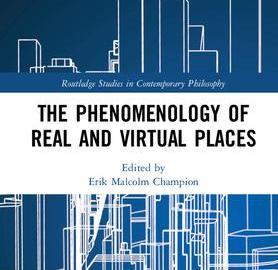Introduction by Erik Champion1. The Inconspicuous Familiarity of Landscape by Ted Relph2. Landscape Archaeology in Skyrim VR by Andrew Reinhard3. The Efficacy of Phenomenology for Investigating Place with Locative Media by Leighton Evans
4. Postphenomenology and “Places” by Don Ihde
5. Virtual Place and Virtualized Place by Bruce Janz
6. Transactions in virtual places: Sharing and excess in blockchain worlds by Richard Coyne
7. The Kyoto School Philosophy on Place: Nishida and Ueda by John W.M. Krummel
8. Phenomenology of Place and Space in our Epoch: Thinking along Heideggerian Pathways by Nader El-Bizri
9. Norberg-Schulz: Culture, Presence and a Sense of Virtual Place by Erik Champion
10. Heidegger’s Building Dwelling Thinking in terms of Minecraft by Tobias Holischka
11. Cézanne, Merleau-Ponty, and Questions for Augmented Reality by Patricia Locke
12. The Place of Others: Merleau-Ponty and the Interpersonal Origins of Adult Experience by Susan Bredlau
13. “The Place was not a Place”: A Critical Phenomenology of Forced Displacement Neil Vallelly
14. Virtual Dark Tourism in The Town of Light by Florence Smith Nicholls



